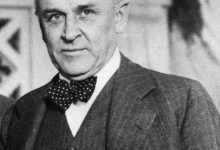Biography of Amir Khosro Dehlavi, one of the 8th century poets

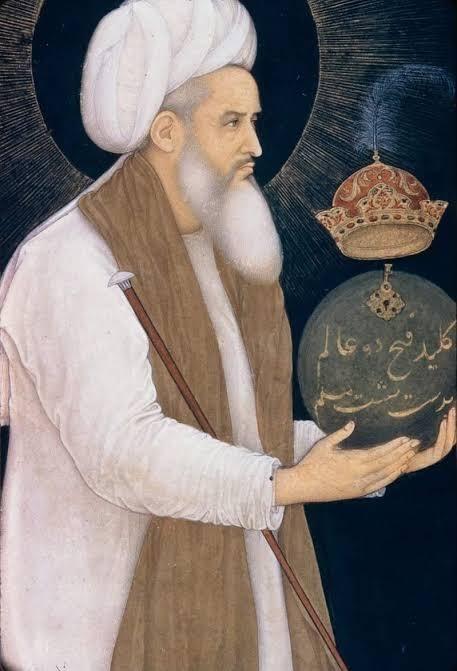 Amir Khosro Dehlavi
Amir Khosro DehlaviAmir Khosro Dehlavi is considered one of the most important poets of the early 8th century who wrote poetry in Persian language in India. This great poet is very interested in the expansion of Ghazal as a literary genre, richness in Persian literary genres with Indian content and language, as well as the expansion of Persian rhythm topics.
Summary of Amir Khosro Dehlavi's biography:
Full name: Amir Naseruddin Abulhasan Khosrow bin Amirsifuddin Mahmoud Dehlavi
Date of birth: 651 AH
Place of birth: Delhi, India
Nickname: Saadi Hind
Surname: Parrot or Sultani
Died: 725 AH in Delhi
Mausoleum: in Nizamuddin Auliya Dargah complex, Delhi
Books: Thamanieh Khosroviyeh
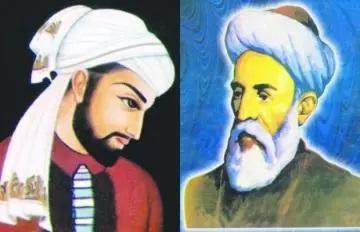 Biography of Amir Khosro Dehlavi
Biography of Amir Khosro DehlaviBiography of Amir Khosro Dehlavi:
Amir Nasir al-Din Abul Hasan Khosrow bin Amir Saif al-Din Mahmud Dehlavi was one of the most important Indian-speaking Persian poets who lived in the second half of the 7th century and the beginning of the 8th century. He was born in the year 651 AH in Delhi, India, and according to what he has mentioned in the following poem, his date of birth dates back to the year 652:
What happened to the history of migration
It was six hundred and eighty eight years
If you reach my year today
To be honest, it was all six and thirty
Amir Khosro Dehlavi's father was one of the chiefs of the “Lachin” tribe of Khatay Turks across the river, when the Tatar people attacked and conquered; Amir Saif al-Din Mahmud also went to India, like many people who lived in the eastern regions of the Iranian plateau, which coincided with the reign of “Shams al-Din al-Totemesh” over Delhi.
Amir Khosrow's father served the king and his son was born in 561. This famous poet spent most of his life serving the kings of his time.
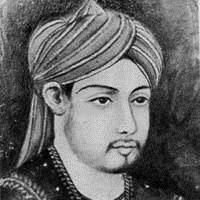 Painting by Amir Khosro Dehlavi in his youth
Painting by Amir Khosro Dehlavi in his youthSultan Al-Mashayikh Zaman Amir Khosro Dehlavi; “Sheikh Nizamuddin Muhammad bin Ahmed Dehlavi” known as Nizam Auliya; He was very devoted to him and was educated by him. On the other hand, in the field of Sufism, he gave him a special position, the signs of which are quite evident in his poems. Amir Khosro's poems have been expressed in an eloquent and eloquent form with the use of great poets such as Saadi, Nizami, Sanai and Khaqani along with religious and mystical teachings.
Since Dehlavi was familiar with Persian, Turkish, Arabic and Indian languages and had a lot of information in this field; He was able to write different poems in different fields.
He knew Indian and Iranian music by heart, so his poems contain a special tenderness. Amir Khosrow's main race was Turkish, that's why Turkish and Indian words are found in his poems. Amir Khosro Dehlavi's style can be considered the vanguard of Indian style.
Amir Khosro's poetic style:
Many works of Amir Khusro Dehlavi can be found in verse and prose, he was one of the followers of Saadi in composing Ghazal, he used 7th century poets especially Sana'i and Khaqani as his model for composing odes, and he chose Nizami Ganjavi to compose Masnavi. .
As you can see, this thoughtful poet is considered one of the most prolific Persian-speaking poets and it can be said that he is special in this field.
Based on what Jami stated; Amir Khosro Dehlavi composed 99 books and the poet says that his poems are more than 400 thousand and less than 500 thousand.
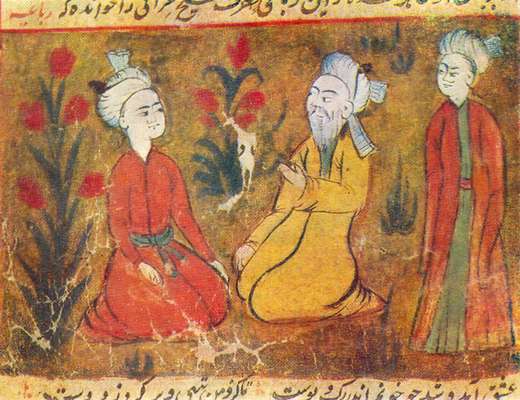 Painted pictures by Amir Khosro Dehlavi
Painted pictures by Amir Khosro DehlaviAs mentioned, Amir Khosro chose Nizami Ganjavi's Dehlavi as his source of imitation for composing Masnavi, the skill that this poet used in arranging and arranging his poems created this issue and he was the first person to imitate him. Amir Khosrow was a Dehlavi, and other poets have also imitated Nizami, but one of the most successful imitators is Dehlavi.
Some people believe that the first signs of occurrence can be seen in Dehlavi's poems and his style is between Iraqi and Indian.
In any case, it cannot be denied that this great poet imitated others in writing his poems, but it must be accepted that Goddadi Dehlavi's smooth nature and taste created a new style in Persian literature, which gave him a new accent, new combinations, and special thoughts. As a result, many novelties can be seen in his words and new themes and selected verses can be seen in his works, this is the reason why many poets and writers after him call Amir Khosrow a master.
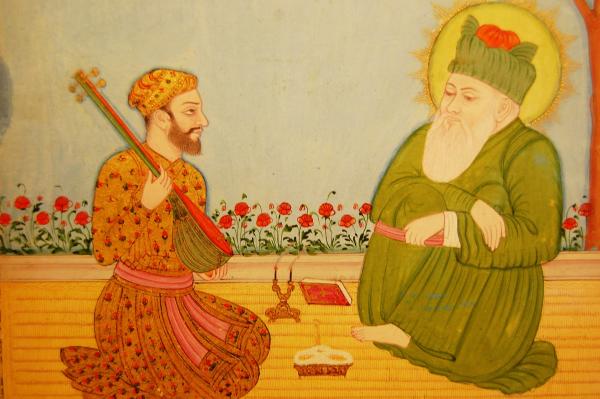 Amir Khosro Dehlavi in the presence of his teacher
Amir Khosro Dehlavi in the presence of his teacherThe works of Amir Khosro Dehlavi:
About the number of Amir Khusro Dehlavi's works, exaggerated narratives have been narrated in tazkirehs. In general, the following can be mentioned for the works of Persian poetry of this great poet:
Diwan Amir Khosrow:
This divan, which consists of 5 notebooks and each of them has a preface, which includes life accidents and notes on the poet's own poetic style, written by his own pen, is as follows:
– Tohfat al-Saghr:
This book contains the poems of this poet from the age of sixteen to nineteen, and includes his poems, sonnets, verses, and his detailed biography.
– Wast al-Haywa: This notebook contains the poet's poems from the age of 20 to about 32, and includes odes, recitations, fragments, sonnets, and quatrains. The odes of this Diwan are praised and mourned by “Nizam al-Din Auliya”, “Ala al-Din Muhammad” and “Muaz al-Din Kiqbad”.
– Gharrat al-Kamal: This book contains the poems of this poet from 34 to 43 years old, and includes odes, recitations, and fragments, and an extended introduction to the life of this poet is given in detail.
– Baqiyyah Naqiyyah: This book contains the poems of the poet's old age, including odes, recitations, quatrains and a short masnavi, as well as praises of “Ala al-Din Muhammad Shah”, his son and some other emirs, as well as an elegy on the death of Muhammad Shah.
– Nahayat al-Kamal: This book contains the poems of the last years of the poet's life, which include tarjieband, masnavi, rubai, ghazal, as well as odes in praise of “Sultan Ghiyathuddin” and the eulogy of “Sultan Qutbuddin Mubarakshah”.
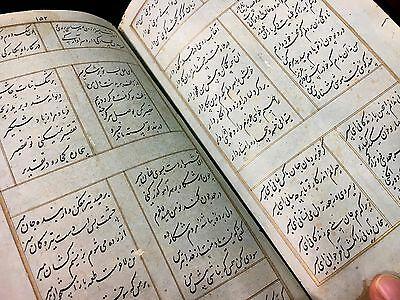 Court of Amir Khosro Dehlavi
Court of Amir Khosro DehlaviDivan Ghazliat of Amir Khusro Dehlavi, which have been collected several times and published in India and Pakistan. The first edition of this diwan dates back to 1871 AD and the second edition to 1392 AH in Lahore. In Iran and India, this court has been corrected and printed several times.
Thamane Khosrowye:
The greatest representative of Indian Persian literature and also the first successor of the Ganjavi military school of literature; Amir Khosro is Dehlavi. His complete belief in Nizami Ganjavi caused him to imitate his style, and in response to that, Nizami Khumsa was created and includes the following:
Informer of Al-Anwar:
This section is written on the weight and method of Makhzan al-Asrar.
Shirin and Khosrow
– Majnoon and Laili: This volume is considered the third poem of Amir Khosrow, which was written in the year 1299, and it is one of the best poems written under the influence of Laili and Majnoon Nizami.
– Ayane Sekandri: This volume is written on the weight and style of Iskandarnameh.
– Eight Heavens: This book is based on the imitation of seven figures.
On the other hand, the works of this great poet do not end with these and Amir Khosro Dehlavi has other ballads and poems as follows:
Al-Saadin's Qur'an:
This work is an excellent collection of a series of pen similes that visualize different issues and topics.
No Sepehr:
This work has nine parts which are composed in different seas, among its seas is Rajas Masads Matwai (Moftalan Moftalan Moftalan), which is considered one of the initiatives of Amir Khusro.
Muftah al-Futuh
Masnavi Dolarani and Khizr Khan:
In addition to its literary merits, this work also has historical and social value and talks about the love of Khizr Khan, the son of Aladdin, with Dolrani, the daughter of the Amir of Gujarat.
The three princes of Serendip:
The theme of this section of Amir Khosro's poems is from an Iranian legend, from which the common word “serendipity” in Western languages originated.
In addition, the following poems are also attributed to him:
– The ode of praise
– Mourning sadness
– Mirroring the heart
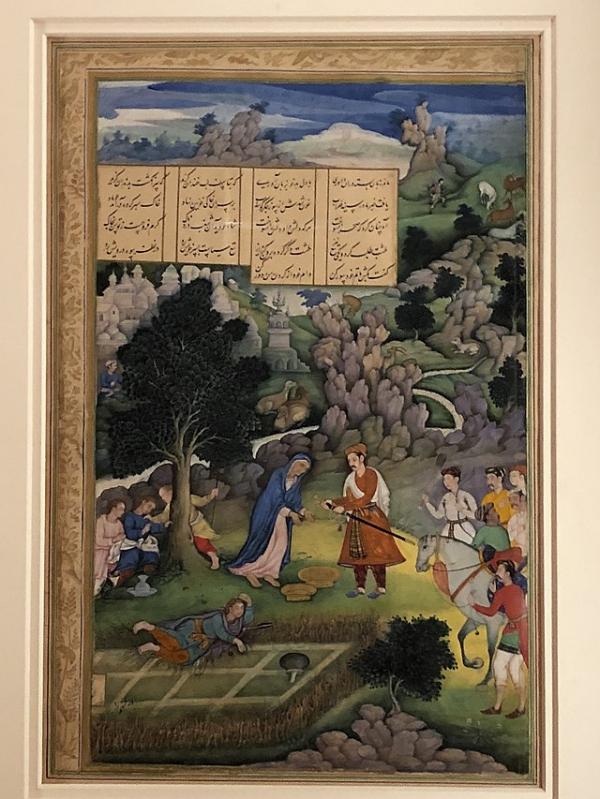 Works related to Amir Khosro Dehlavi
Works related to Amir Khosro DehlaviDeath of Amir Khosro Dehlavi:
Shortly after the death of Nizamuddin Olya; Amir Khosro Dehlavi also passed away in 725 AH and was buried near the tomb of the Sheikh. The tomb of this great poet is one of the crowded neighborhoods of Delhi, which is known as Nizamuddin Auliya and is located near the Mumbai city train station called Nizamuddin train station and near Humayun's tomb.
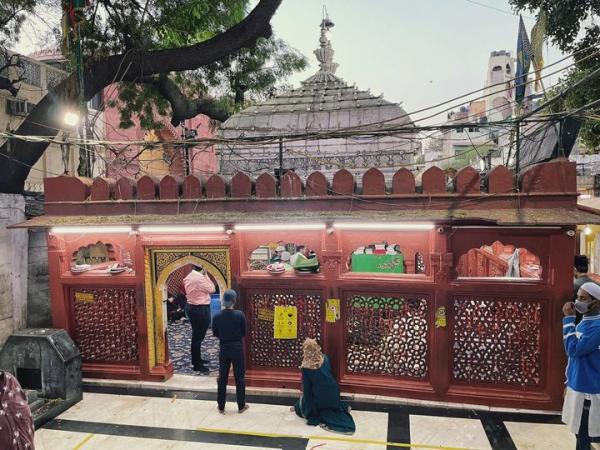 Amir Khosro Dehlavi Court
Amir Khosro Dehlavi Courtcompilation: Cover biographical section
